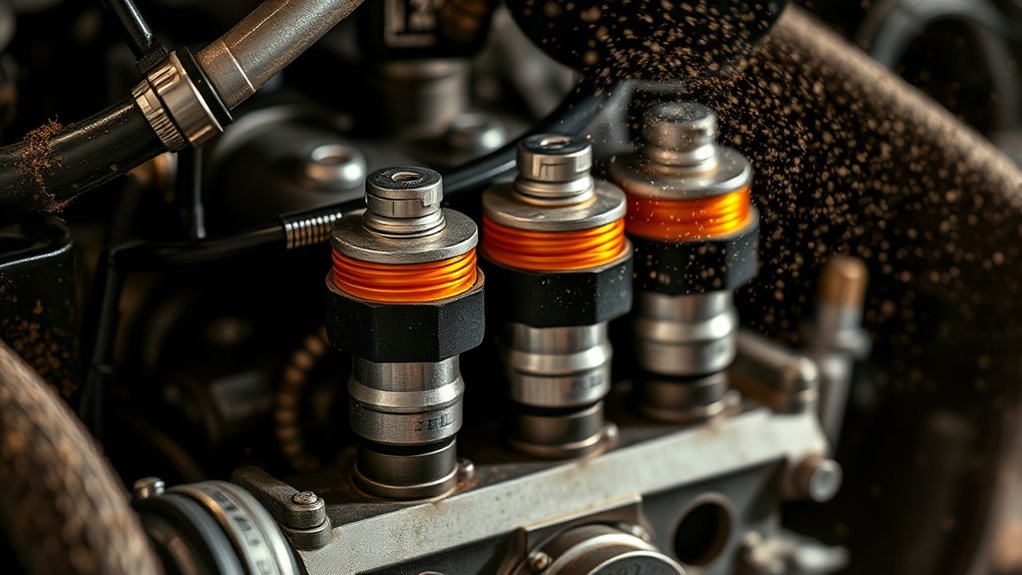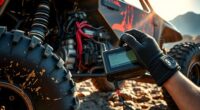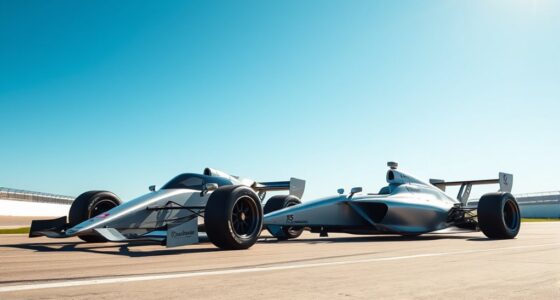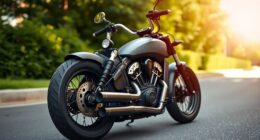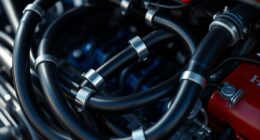Fuel octane measures how well your high-compression dirt bike engine resists knocking or pre-ignition, which can harm your engine. Higher octane fuels have better resistance, making them ideal for engines with increased compression ratios. Using the correct octane guarantees your bike runs smoothly and efficiently while preventing damage. To get the best performance, check your owner’s manual for the recommended octane level and explore more about how octane affects your ride.
Key Takeaways
- High-compression dirt bike engines require higher octane fuel to prevent knocking and sustain optimal performance.
- Octane measures a fuel’s resistance to premature ignition, crucial for high compression ratios.
- Using the recommended octane level from the owner’s manual ensures engine efficiency and longevity.
- Higher octane fuels do not automatically boost power but help avoid knocking in demanding conditions.
- Always match fuel octane to your engine’s needs, especially during aggressive riding or hot climates.
What Is Octane and How Is It Measured?
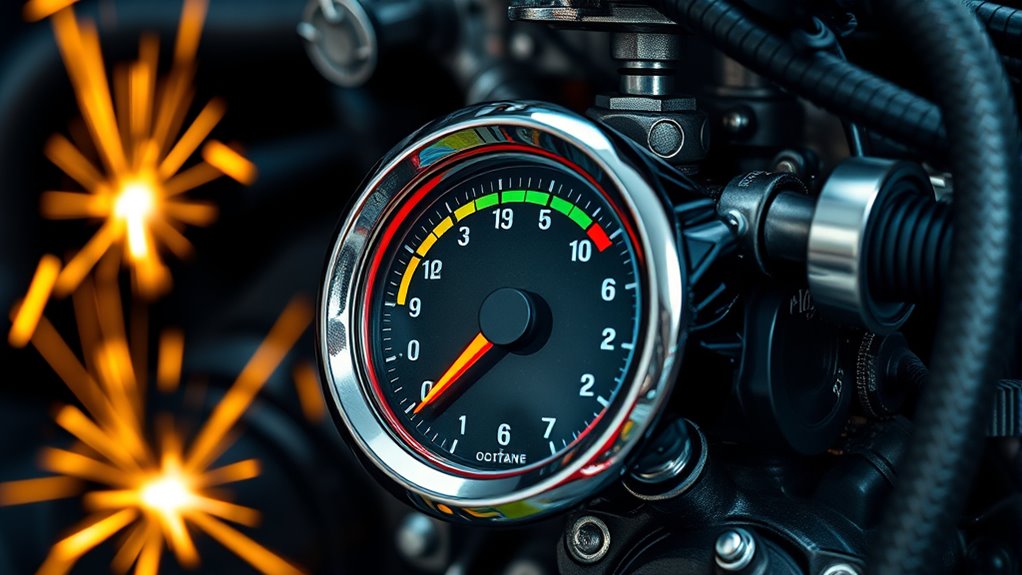
Have you ever wondered what octane actually is and how it’s measured? Octane is a type of hydrocarbon compound found in gasoline, and it indicates the fuel’s ability to resist knocking or pinging during combustion. Knocking happens when the air-fuel mixture ignites prematurely, which can damage your engine. To measure octane, scientists use a standardized test called the Research Octane Number (RON) and the Motor Octane Number (MON). These tests compare how well a fuel performs in preventing knocking versus a reference mixture of iso-octane and heptane. The higher the octane rating, the more resistant your fuel is to knocking. Fundamentally, octane ratings help you understand how suitable a fuel is for your engine’s compression and performance needs.
The Impact of Octane on High-Compression Engines
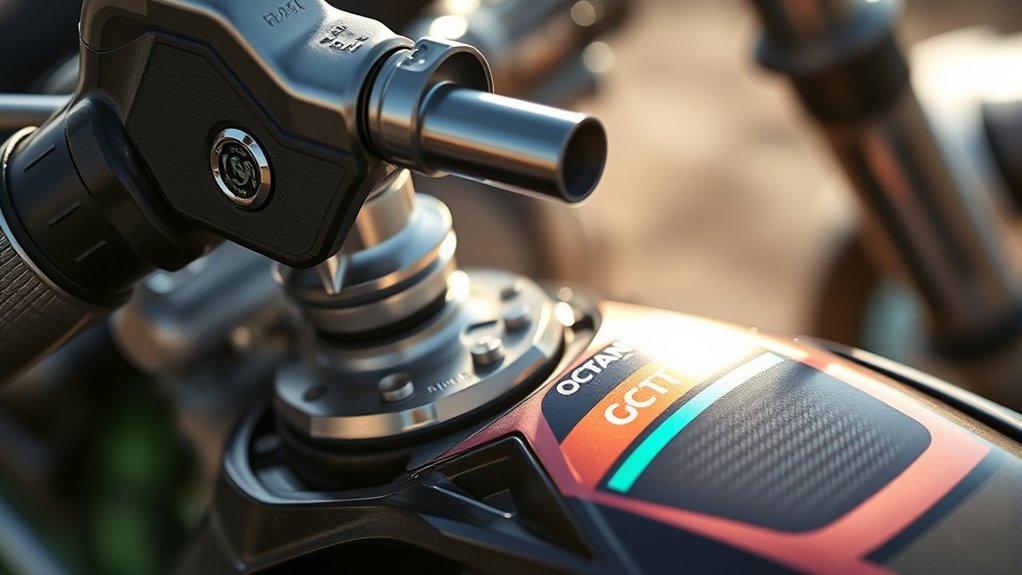
High-compression engines rely heavily on the octane rating of the fuel you use because higher compression ratios increase the likelihood of knocking. Knocking happens when the fuel-air mixture ignites prematurely, causing knocking sounds and potential engine damage. Using fuel with an appropriate octane rating prevents this, ensuring smoother operation and better performance. Low-octane fuel in a high-compression engine can lead to knocking, reducing power and possibly harming engine components over time. Higher octane fuels resist knocking better, allowing your engine to run efficiently at higher compression ratios. This means you can maximize power and efficiency without risking damage. In short, choosing the right octane fuel is essential for maintaining ideal performance and longevity in high-compression dirt bike engines. Additionally, understanding home maintenance can help in keeping your engine in top condition for optimal performance.
How to Determine the Right Octane for Your Dirt Bike
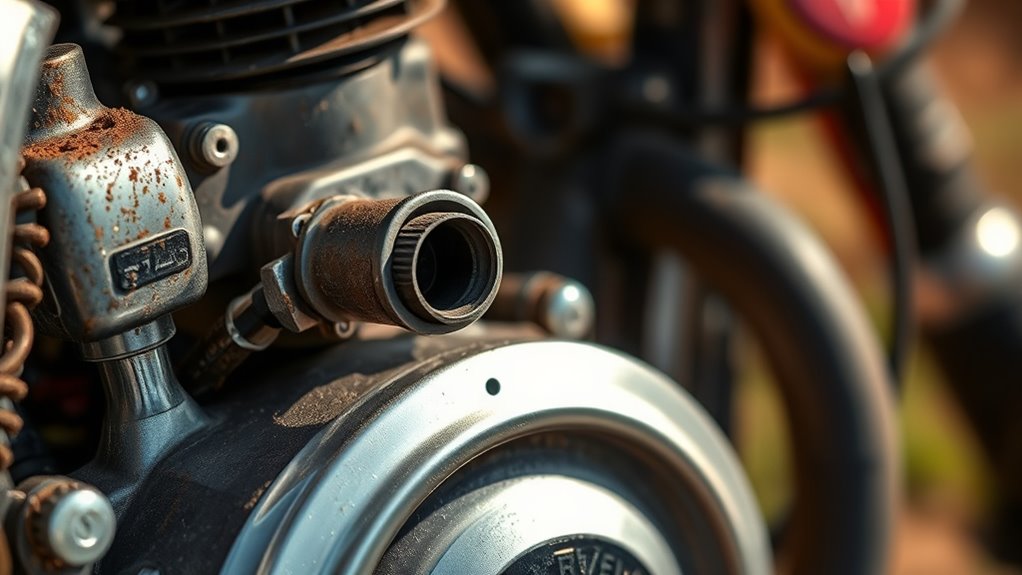
Choosing the right octane for your dirt bike starts with understanding your engine’s specifications and riding conditions. Check your owner’s manual or engine labels for recommended octane ratings. If you ride aggressively or in high-heat environments, higher octane fuel may prevent knocking and improve performance. For casual riding, lower octane might suffice. Use this table as a quick guide:
| Riding Condition | Recommended Octane |
|---|---|
| Standard daily riding | Regular (87-89) |
| High compression engine | Mid-grade (91-93) |
| Racing or aggressive use | Premium (95-98) |
| Hot climate riding | Premium (95-98) |
| Low fuel economy concern | Use recommended octane |
Always follow manufacturer guidelines for best results and avoid unnecessary octane expenses. Additionally, understanding the cost differences between fuel types can help you make more economical choices based on your riding habits.
Common Myths About Octane Ratings
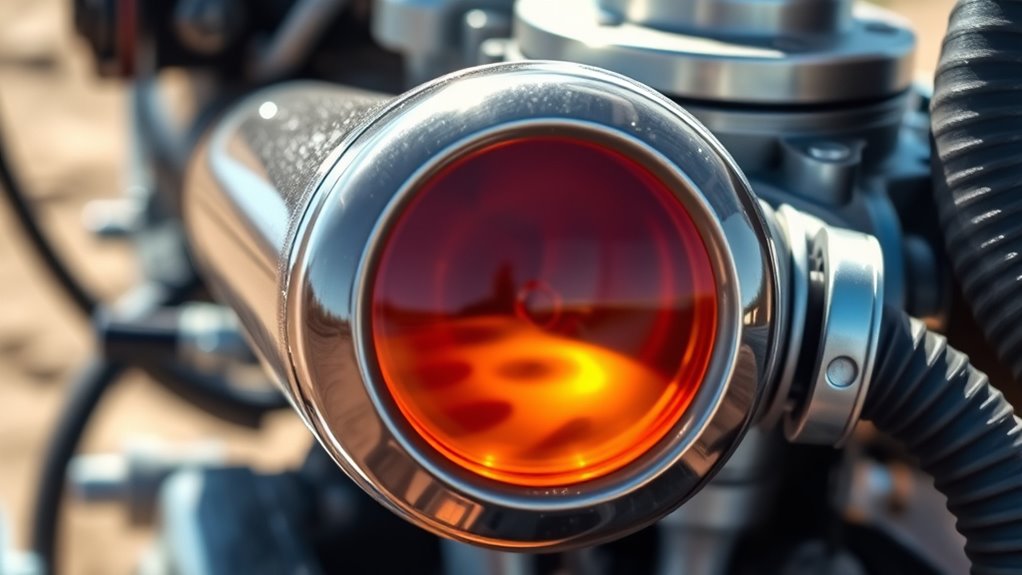
Many people believe that using higher octane fuel automatically boosts their engine’s power and efficiency, but this isn’t always true. Octane ratings simply measure how resistant fuel is to knocking, not how much power it produces. Using a higher octane fuel in an engine designed for regular octane won’t improve performance or fuel economy. In fact, it can be a waste of money, since high-octane fuels often cost more. Another myth is that octane ratings alone determine quality. While they indicate knock resistance, other factors like additives and fuel formulation also matter. Don’t assume that higher octane automatically means better fuel; always follow your engine manufacturer’s recommendations for ideal performance. Using the right fuel ensures your dirt bike runs smoothly without unnecessary expense. Additionally, understanding the role of credit card security measures in fuel transactions can help prevent fraud and protect your investments.
Tips for Choosing and Using Proper Fuel in Off-Road Machines
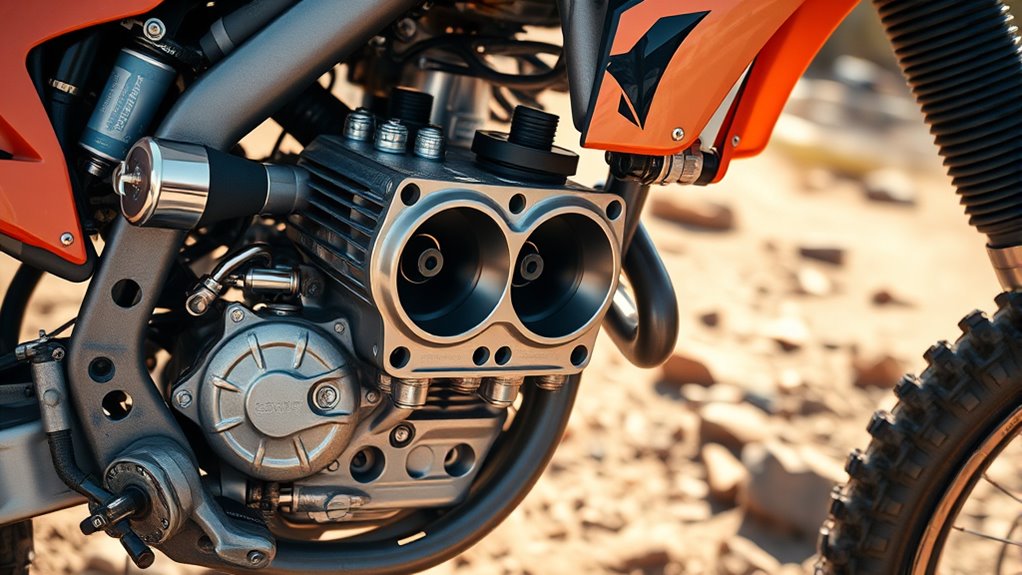
Selecting the right fuel for your off-road machine guarantees ideal performance and durability. Always check your owner’s manual for the recommended octane rating; using the correct fuel prevents knocking and engine damage. Higher compression engines typically require high-octane fuel, but don’t assume you need premium unless specified. If your engine runs smoothly on regular fuel without knocking, switching to higher octane isn’t necessary and won’t improve performance. Store fuel in a cool, dry place to prevent degradation, and avoid using old or contaminated fuel. When refueling, use clean pumps and avoid overfilling. Pay attention to any engine performance issues—pinging, knocking, or hesitation can signal improper fuel choice. Proper fueling ensures your off-road machine stays reliable and performs at its best. Additionally, understanding engine compression can help you select the appropriate fuel type for optimal operation.
Frequently Asked Questions
How Does Altitude Affect Octane Requirements for Dirt Bikes?
Altitude impacts your dirt bike’s octane needs because higher elevations mean thinner air, which reduces engine compression and knocking risk. As you go higher, your bike may require lower octane fuel since the engine’s stress decreases. However, if you’re racing or riding aggressively at high altitude, sticking with the recommended octane guarantees best performance and prevents knocking. Always adjust your fuel choice based on altitude and riding conditions.
Can Using Higher Octane Fuel Improve Engine Power in High-Compression Engines?
Did you know that using higher octane fuel can increase engine power in high-compression engines? If your engine is designed for high compression, it’s programmed to take advantage of the fuel’s resistance to knocking. By using higher octane fuel, you reduce knocking risk, allowing your engine to run more efficiently and generate more power. So, upgrading your fuel could give you noticeable performance gains on the trail or track.
What Are the Long-Term Effects of Using Incorrect Octane Fuel?
Using the wrong octane fuel can cause long-term damage to your engine. If you use a lower octane than recommended, knocking and pinging may occur, which can harm pistons and valves over time. Conversely, consistently using higher octane fuel than needed doesn’t offer benefits and can be more expensive. Always follow your engine’s specifications to guarantee durability and peak performance, avoiding costly repairs down the line.
Is Octane Booster Safe for High-Performance Dirt Bike Engines?
Imagine you’re racing your dirt bike and want extra power—an octane booster might seem tempting. Generally, they’re safe if used as directed, especially for high-performance engines. For example, a rider added a booster for a race and noticed improved throttle response without engine issues. Just make certain you follow the manufacturer’s instructions, as overuse can lead to knocking or damage. Used correctly, octane boosters can give you a safe performance boost.
How Do Temperature Variations Influence Octane Needs During Riding?
Temperature variations considerably impact your octane needs during riding. When it’s hot, your engine runs hotter and may require higher octane fuel to prevent knocking. Conversely, cooler temperatures help lower engine temperatures, which might allow for lower octane fuel. You should adjust your fuel choice based on weather conditions, ensuring you use the appropriate octane level to maintain ideal performance and avoid knocking or engine damage.
Conclusion
Choosing the right octane is like finding the perfect tune for your dirt bike’s engine—smooth, powerful, and reliable. When you fuel up with the proper octane, you’ll feel the engine roar to life, carving through dirt and mud with ease. Don’t let myths cloud your judgment; trust what your engine needs. With the right fuel, every ride becomes a symphony of performance, leaving trails of dust and adrenaline in your wake.
